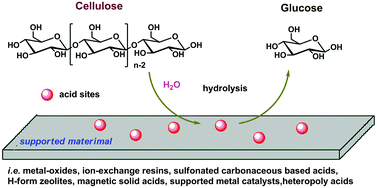Enzyme are active protein that can increased the bio-chemical reaction.
Enzyme are natural chemicals are used as living organism but are themselves 'non living'.
In Textile Industry there are three types of Enzyme are used.
- Amylasis Enzyme: Which is used in Woven dyeing factory/textile mills for de-sizing.
- Catalyse Enzyme: which used as Peroxide killing.
- Cellulose Enzyme: which used in knit dyeing factory for bio-polishing or to remove hairiness of fabric surface.It is also used in Denim washing.
At First I want to show the hydrolysis of Cellulose.
As the main component of lignocelluloses, cellulose is a biopolymer consisting of many glucose units connected through β-1,4-glycosidic bonds. Breakage of the β-1,4-glycosidic bonds by acids leads to the hydrolysis of cellulose polymers , resulting in the sugar molecule glucose oroligosaccharides . Mineral acids, such as HCl and H2SO4, have been used in the hydrolysis of cellulose. However, they suffer from problems of product separation, reactor corrosion, poorcatalyst recyclability and the need for treatment of waste effluent. The use of heterogeneous solid acids can solve some of these problems through the ease of product separation and goodcatalyst recyclability. This review summarizes recent advances in the hydrolysis of cellulose by different types of solid acids, such as sulfonated carbonaceous based acids, polymer based acids and magnetic solid acids. The acid strength, acid site density, adsorption of the substance and micropores of the solid material are all key factors for effective hydrolysis processes. Methods used to promote reaction efficiency such as the pretreatment of cellulose to reduce its crystallinity and the use of ionic liquids or microwave irradiation to improve the reaction rate are also discussed.

If We sink a one piece of cellulose fabric for 3/4 days after 3/4 days this fabric strength become zero.Because the maximum cellulose become hydrolyzed & transfer into glucose.
Cellulose Enzyme just increase this Bio-chemical reaction. It works in surface at first because water react at first protruding fibre.

